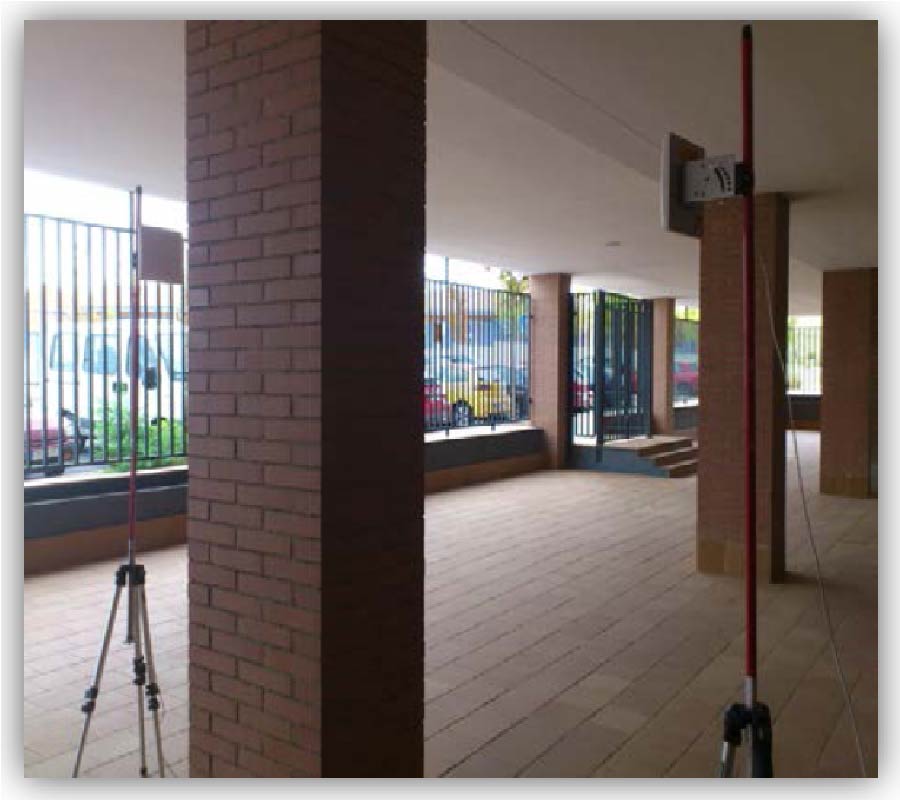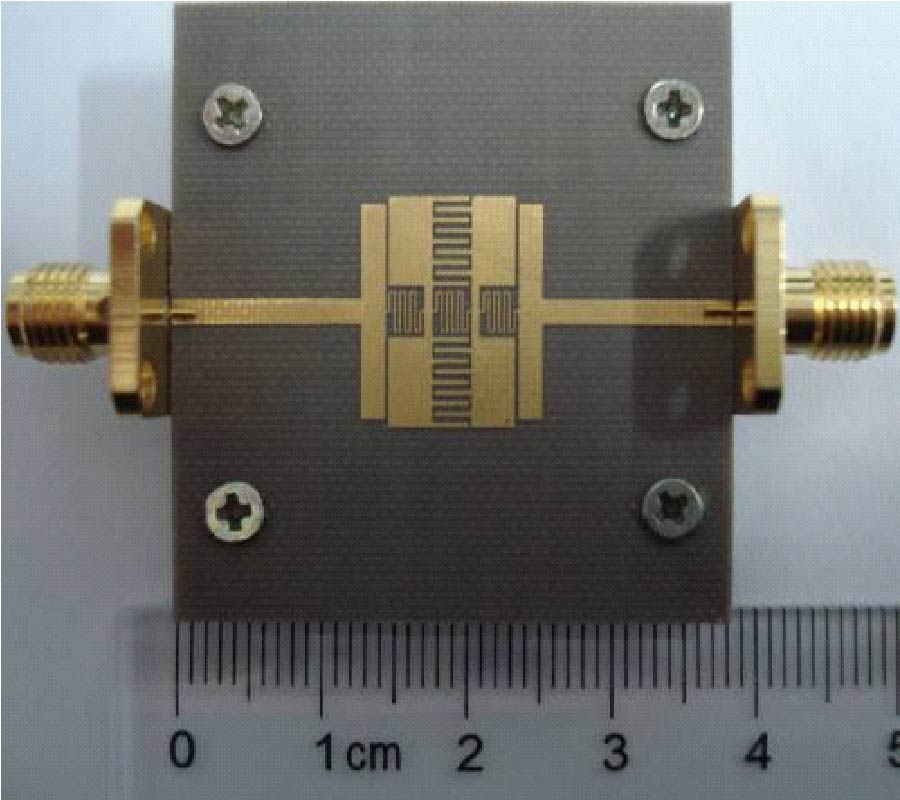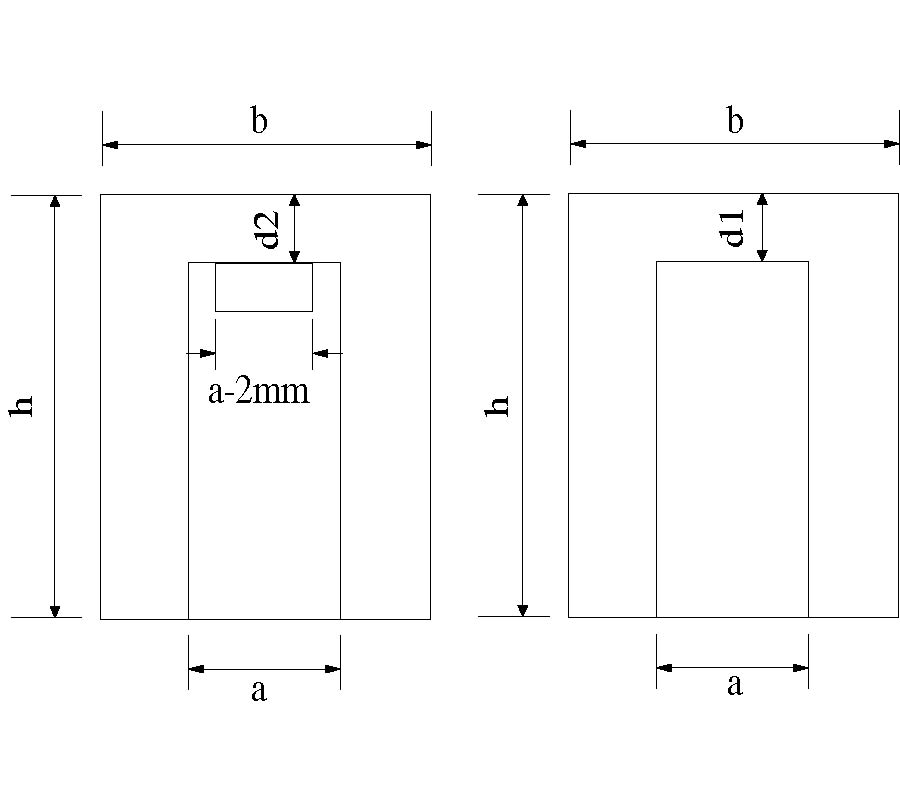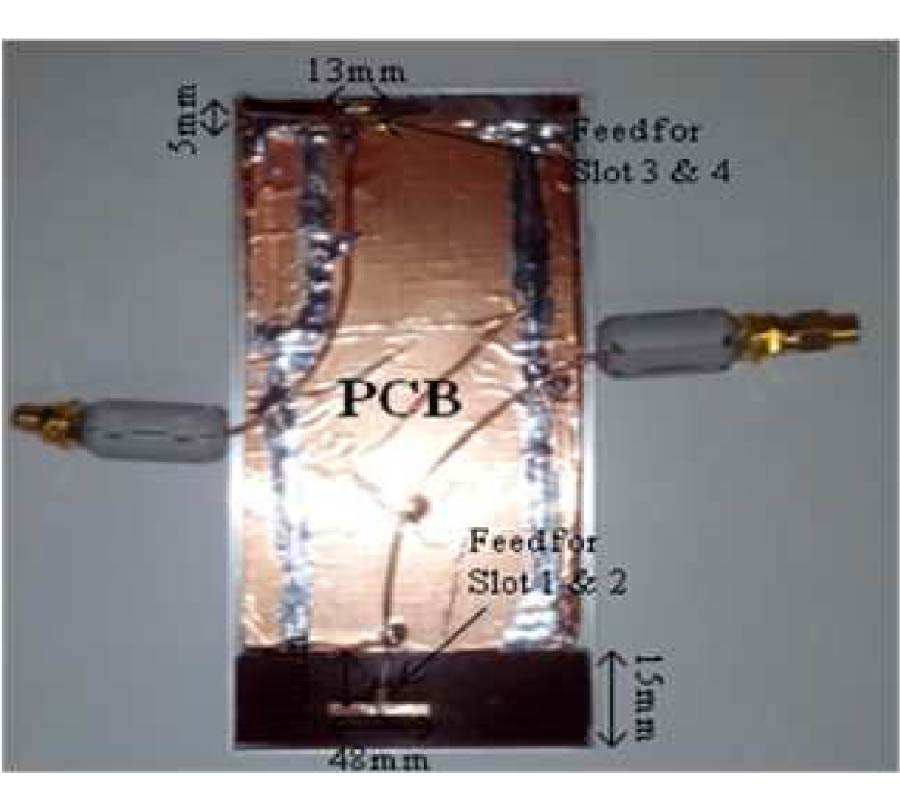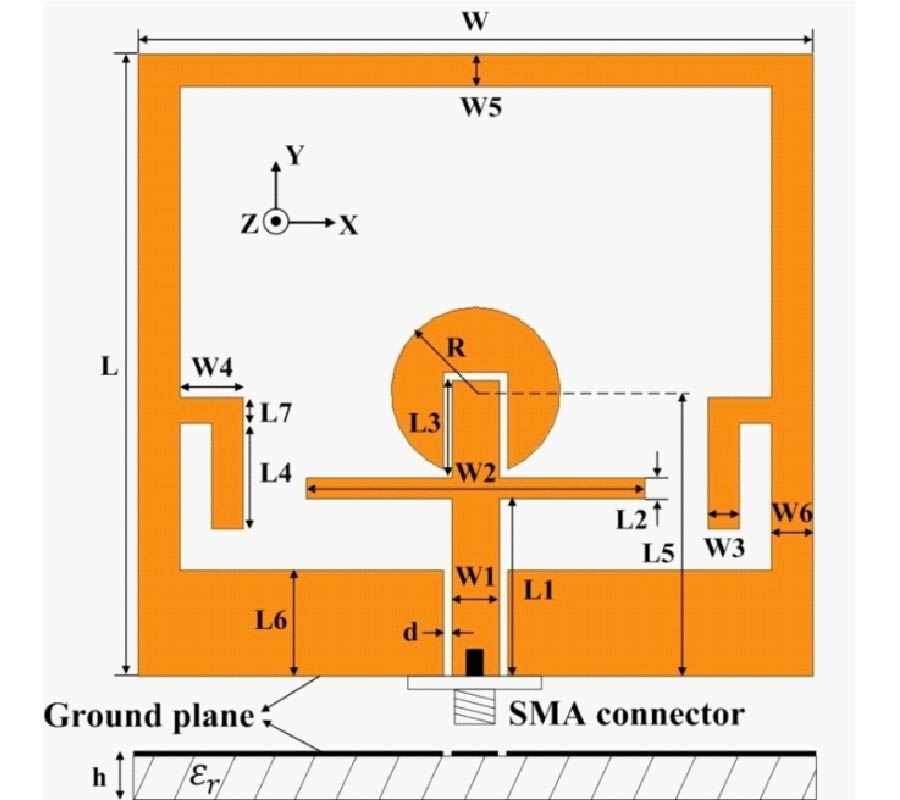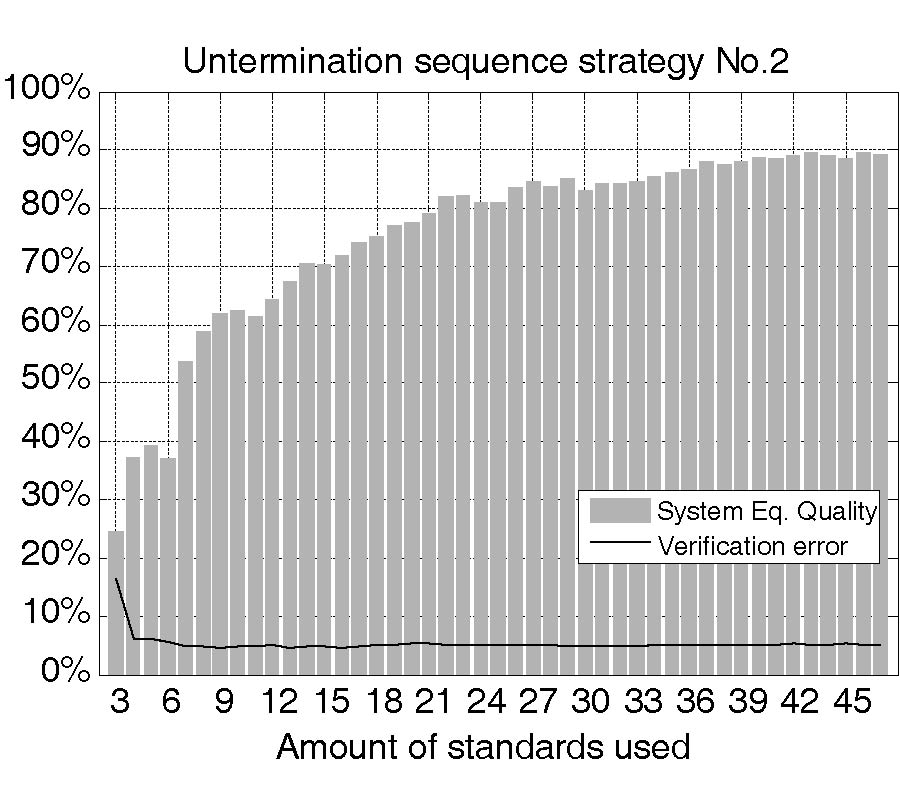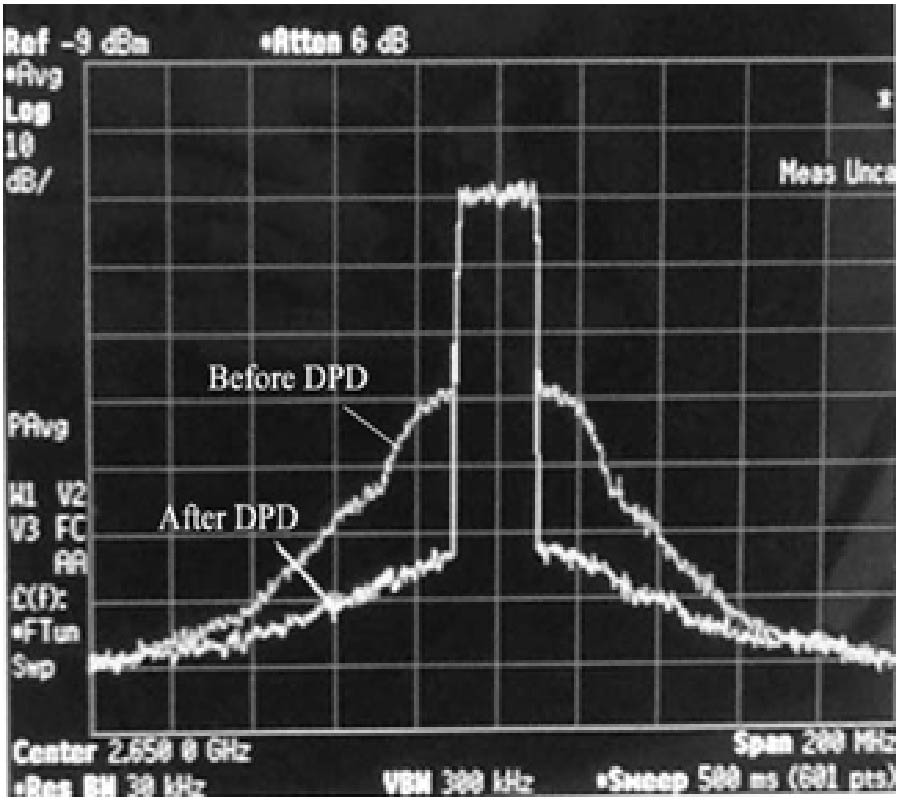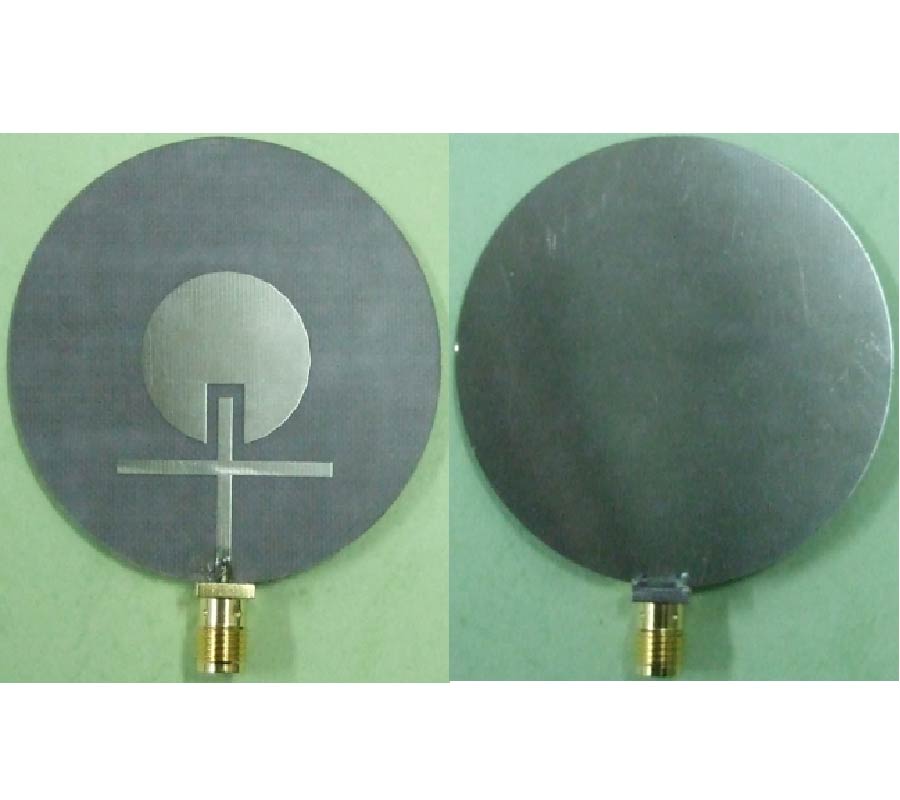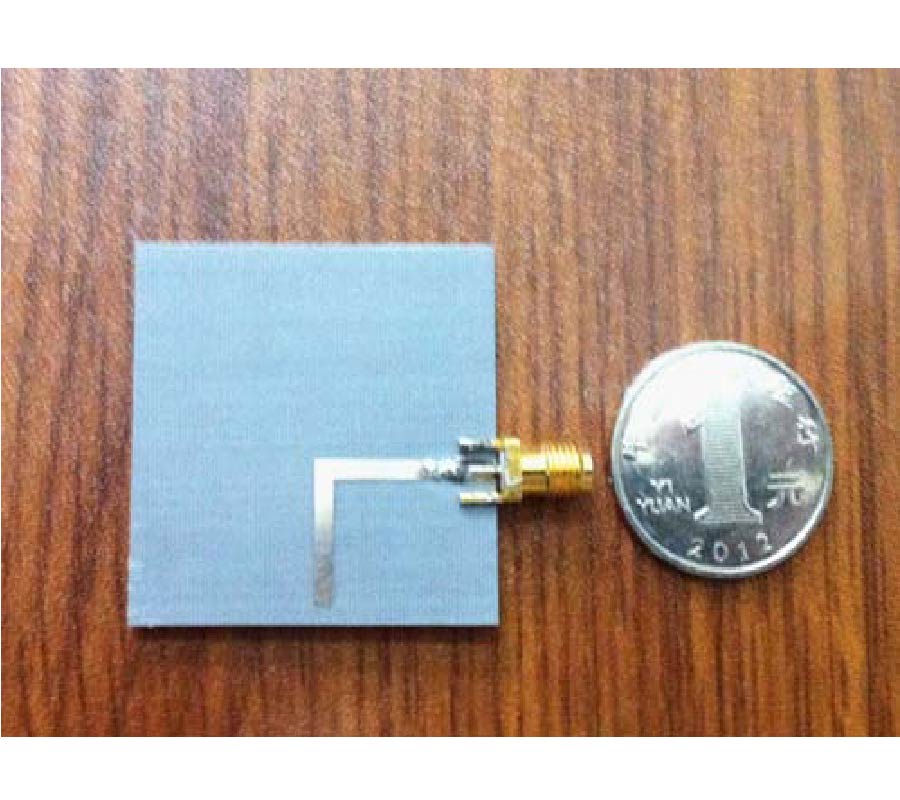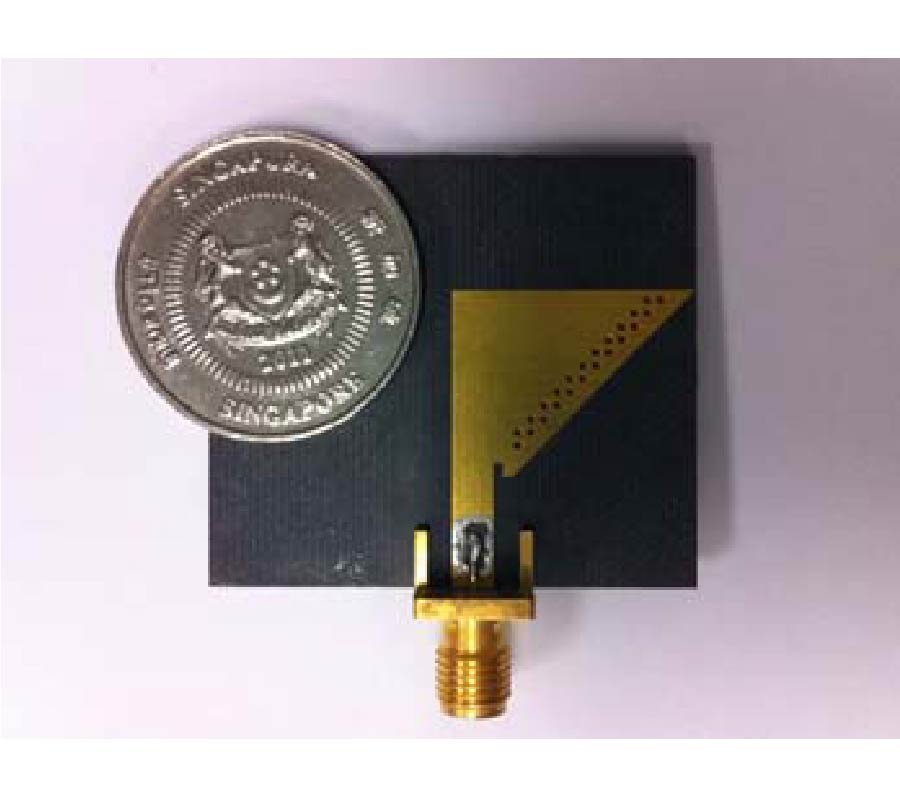Truncated Rhombus-Like Slotted Antennas with Aperture Coupling Technique
Suzilawati Muhamud-Kayat
,
Mohd Tarmizi Ali
,
Mohd Khairul Mohd Salleh
,
Mohd Hazri Mohd Rusli
,
Nurulazlina Ramli
and
Hafiza Alias
This paper presents two novel designs of truncated rhombus-like slotted antenna (TRLSA) based on aperture-coupled feeding technique. In conventional antennas, different patch dimensions are required to accommodate different frequencies which normally result in bigger antenna structures. Therefore, this paper proposes a unique structure of `zig-zag' slot embedded on two different antennas to achieve two different resonant frequencies but of the same patch dimensions. An analysis on design transformation which includes comparative simulation results of two reference antennas and TRLSAs has also been presented to provide better understanding on the design concept. CST Microwave Studio software has been used for design simulations and optimizations. The simulation and measurement results of TRLSAs are also presented. The results confirm that the antennas can operate at two different frequencies, 5.3 GHz and 5.8 GHz with the same patch dimensions by integrating the "zig-zag" slot at two different orientations in x- and y-axis respectively. Hence, size reduction is achieved for lower frequency patch which gives a great advantage for future development of a frequency reconfigurable antenna in an array configuration.
